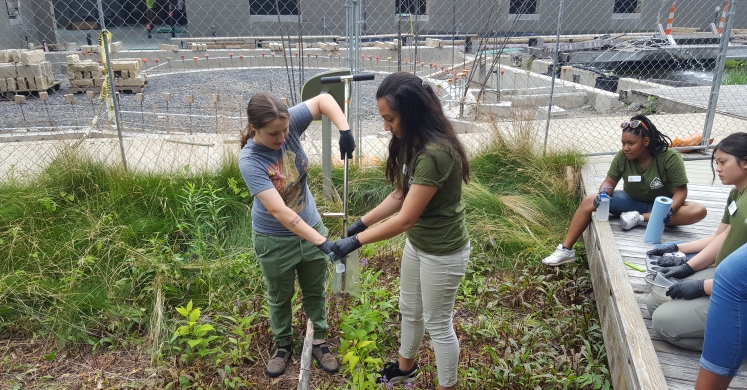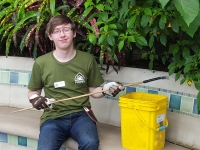Blog

Learning for a Greener Future: Week 2

The Learning for a Greener Future internship is a six-week program offered by Phipps to Pittsburgh-area high school students. Jacob Herrup completed the internship last summer and has returned this year as the Intern Leader. In this blog he will document the interns’ weekly experiences and add in a few interesting facts along the way!
Throughout the second week of the internship our focus has been on local environmental issues. Firstly, in regards to pollution, we narrowed it down into three categories: air, water and soil. These can all effect one another, and this was shown to us through our in-class activity of making maps of a community. We then looked at the effects of pollution on not only that community, but the ones downstream that all eventually led to the Gulf of Mexico. This was a reflection of a very real problem. Different “parts” of the same “whole,” that being human society, not collaborating with each other to enact positive change. This was further explored through our discussion on local businesses that contribute the most to pollution, and how mainstream media at times misdirects people from the trouble afoot.
This week we also worked with many outside organizations with a focus on damage to the environment. DECO Resources came to the Nature Lab to educate us on soil testing, which is an essential step to improving availability of produce in low-income urban areas. The process is simple but very unforgiving of error. If soil is determined unsafe for planting and harvesting edible crops, it has to be made healthier through incorporation of plants that can absorb the heavy metals from the soil, such as sunflowers. We also worked with Nine Mile Run Watershed Association to help manage invasive species in Frick Park. While not pollutants themselves, the fact they are running wild hurts the ecosystem, which predominantly needs the area’s native plants to thrive. We also learned about the combined sewage system, which during rainfall often overflows into Nine Mile Run. It’s a rough sight to see, considering sewage overflows into Pittsburgh waterways after only a tenth of an inch of rainfall.
This week we continued our collaboration with Slow Food Pittsburgh in cooking meals with sustainable ingredients. We met with Shelly Oswald from Old Time Farm, and she discussed with us the adversity the poultry and egg industry has faced with an attempt to allow a more natural environment for the farmed animals and their selective breeding. This breeding over time transformed their bodies in a way that makes cage free prospects actually detrimental for the animals because they will be susceptible to injury. We also learned a lot about the development of chicken and turkey eggs, and her farm’s commitment to more natural and humane methods of raising animals. At the very end of the week, we worked with professional photographer Doug Oster. We began learning methods of picture-taking to use in our adventures around Phipps and other places we go during our internship. Next week we’re meeting with some interns from other organizations, and we hope to teach them a couple things that we’ve learned so far!
This Week’s Tidbits:
- To get proper lighting in your pictures, make sure the source of light is behind the photographer. (Learned from Doug Oster, professional photographer.)
- Since soil and water is tested in parts per million, each part being a molecule, the materials have to be as pure and devoid of other materials as possible before they are tested. (Learned from Anthony Stewart, Founder of DECO Resources.)
- Heirloom plants, unlike other plants, are grown to maintain certain features generation to generation. There are black carrots, white beets, neon and metallic-colored tomatoes, and everything in between! (Learned from Mike Bechtel, Edible Garden Manager at Phipps Conservatory.)

